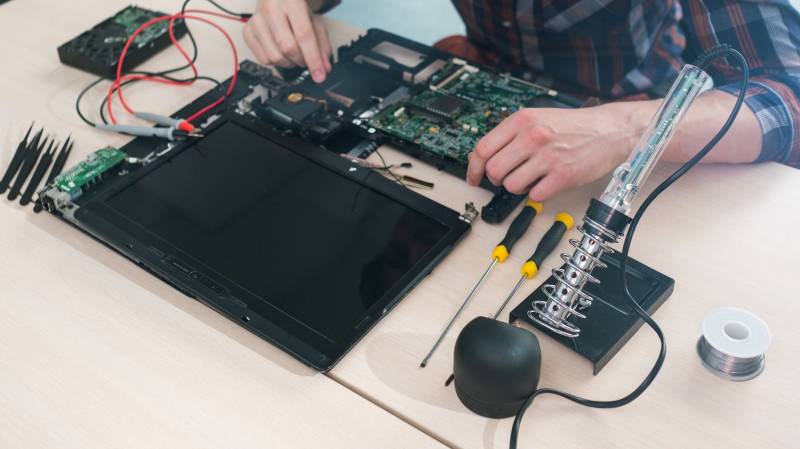Whether you're a computer novice or an experienced techie, knowing how to troubleshoot and repair a computer is a valuable skill. Even the most reliable computers can have technical problems from time to time. From slow performance to pop-up errors, it can be frustrating trying to figure out what's wrong and how to fix it. Fortunately, there are some easy steps you can take to get your computer running like new again.

Software updates are critical for keeping your computer running efficiently and securely. Many times, software updates contain bug fixes and security patches that protect your system from malware, viruses, and hackers. To check if you have any pending software updates on Windows 10, click on the Start menu and select Settings > Update & Security > Windows Update. If any updates are available, install them right away. For Mac users, open the App Store app and click Updates in the sidebar. Install all available updates for your system.
If your computer is sluggish or unresponsive, consider clearing out unwanted programs or files that might be clogging up memory or hard drive space. On Windows 10 computers go to Settings > System > Storage and click the drive you want to clean up (usually this is the C drive). This will show you which types of files are taking up space on your PC so you can delete anything that isn't needed anymore. On Macs open Finder -> Applications folder and delete any programs that aren't being used anymore. You should also empty the Trash as well as delete any large media files like photos or videos that are no longer needed. To find additional details please check out https://www.infotechcomputers.ca/
Disk Cleanup helps remove temporary files that may be taking up unnecessary space while disk defragmenter helps improve read/write speeds by organizing data on your hard drive in a more efficient manner. To run Disk Cleanup on Windows 10 computers head over to Settings > System > Storage > Free up space now and select the files you want to delete (e.g., Recycle Bin Contents). To defragment your hard drive go back into Storage settings -> Optimize Drives -> Defragment Now button (this process can take several hours depending on how big your hard drive is). On a Mac open Finder -> Applications -> Utilities -> Disk Utility -> First Aid tab -> Run button (this will check for errors on your disk) then select Optimize button at top of window and hit Run again (this process will take several minutes depending on size of hard drive).
The first step in repairing a computer is making sure you have the right tools for the job. Depending on the problem you're facing, you may need different equipment to fix it. For example, if your laptop needs a new battery or hard drive, then you'll need screwdrivers and other tools to open up the device and replace the part. If your computer is having software issues, then you might need anti-virus scanning software or other specialized programs to fix them.

No one likes dealing with technical problems but they come with owning a computer unfortunately. Taking proactive steps such as regularly updating software, clearing out unwanted programs/files, running disk cleanup/defragmentation can help keep your machine running smoothly without having to call in an expert technician every time something goes wrong. With these tips in mind next time something goes wrong with your PC or Mac you'll have a good idea of how to fix it yourself without breaking out panic sweat.